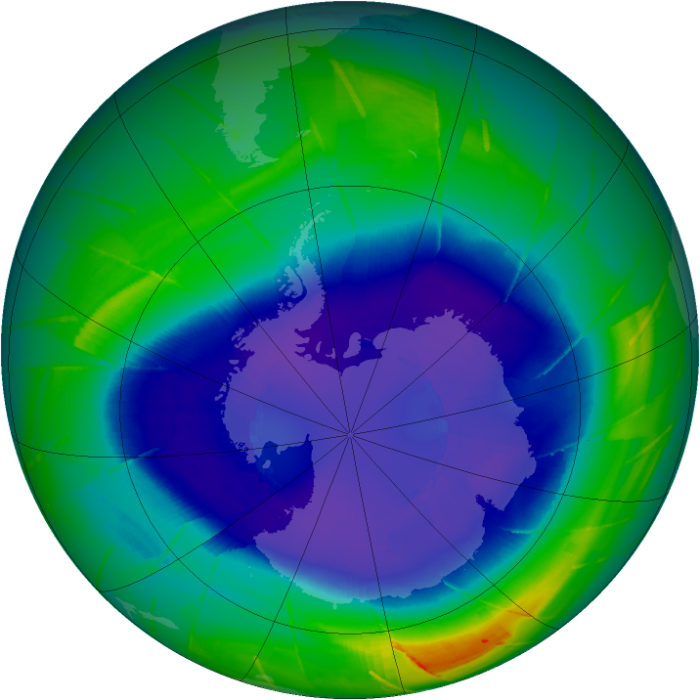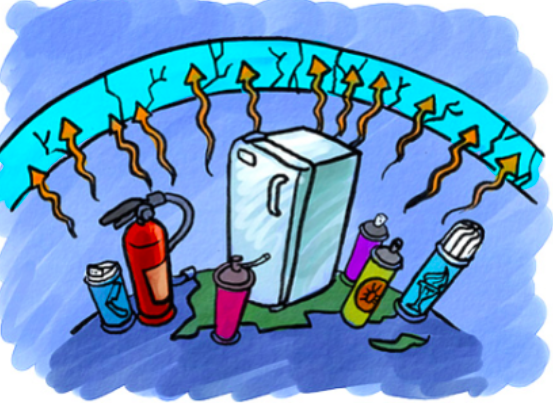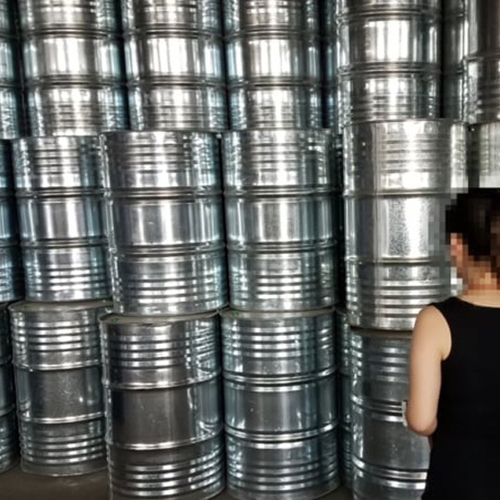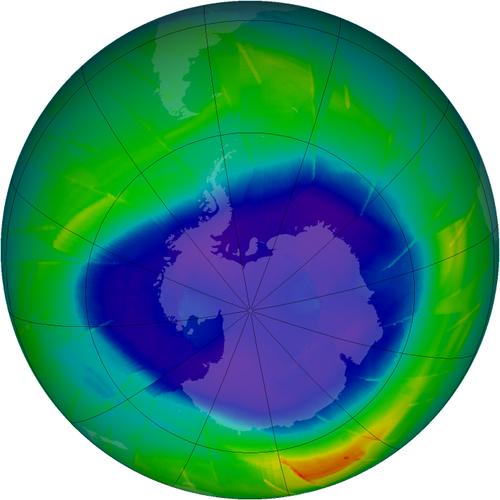
Image Credit: NASA
Scientists have discovered that an industrial chemical once widely used as a blowing agent in foam insulation may be back in secret production, years after it was phased out as part of the 1987 Montreal Protocol.
The Washington Post and other news outlets report that increasing levels of a chlorofluorocarbon called CFC-11 have been detected in air samples taken at an observatory in Hawaii. The CFC-11 was mixed with other chemicals thought to be created somewhere in east Asia, but researchers couldn’t be any more precise in guessing where it came from.
CFC-11 was phased out globally after scientists connected it with damage to the atmosphere’s ozone layer, which shields the surface of the planet from UV radiation. The ozone layer is continuing to recover, but an increase in CFC-11 would slow the rate of recovery. CFC-11 lasts for about 50 years once it gets into the atmosphere.
A report said that emissions of CFC-11 have increased 25% since 2012. Other explanations were considered, such as increase in the number of buildings containing CFC-11 residues that were being demolished. But ultimately researchers said that the evidence “strongly suggests” a new source of emissions.
“I’ve been making these measurements for more than 30 years, and this is the most surprising thing I’ve seen,” Stephen Montzka, a scientist with the National Oceanic and Atmospheric Administration who led the work, told The Post. “I was astounded by it, really.”
It’s not clear why anyone would want to start making CFC-11 again, not only because of the international ban but also because industry has developed alternatives. The newest blowing agents used in spray polyurethane foams — chemicals called hydrofluoroolefins or HFOs — have no impact on the ozone layer and have very low global-warming potential.
Robert Watson, a former NASA scientist who organized flights into the stratosphere to study ozone depletion in the 1980s, told the newspaper in an email that new flights might be needed to identify the source of the chemical.
“It is not clear why any country would want to start to produce, and inadvertently release, CFC-11, when cost-effective substitutes have been available for a long while,” he said. “It is therefore imperative that this finding be discussed at the next Ministerial meeting of Governments given recovery of the ozone layer is dependent on all countries complying with the Montreal Protocol (and its adjustments and amendments) with emissions globally dropping to zero.”
The developments were reported in Nature.
Weekly Newsletter
Get building science and energy efficiency advice, plus special offers, in your inbox.















0 Comments
Log in or create an account to post a comment.
Sign up Log in